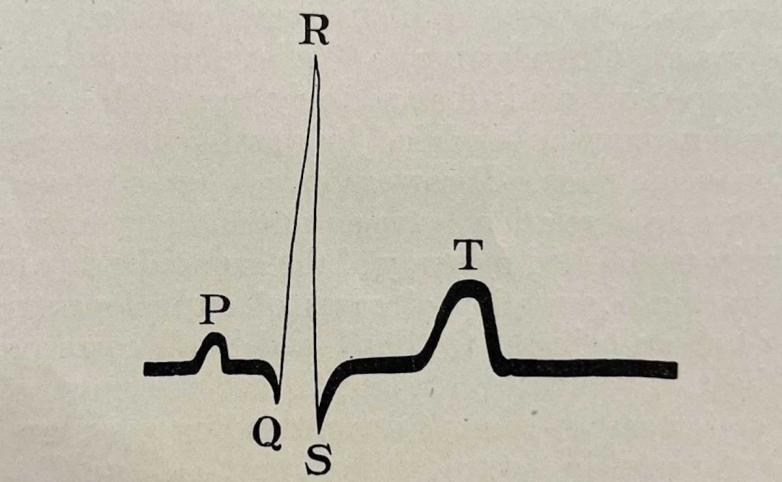The Huntington Acquires W. Bruce Fye Cardiology Collection

Walter B. James and Horatio B. Williams, "The Electrocardiogram in Clinical Medicine," American Journal of the Medical Sciences, 1910.
San Marino, CA -- The Huntington Library, Art Museum, and Botanical Gardens announced today that it has acquired one of the world’s most significant libraries focused on the history of cardiology and cardiovascular science. The W. Bruce Fye Collection of Cardiovascular Medicine, Surgery, Science, and Technology contains more than 2,700 books and more than 12,000 offprints of articles, dissertations, and secondary publications that document not only the evolution of our understanding of the heart and circulatory system but also the development of modern medicine. The collection, spanning the 16th through 20th centuries, was assembled by W. Bruce Fye, a cardiologist and historian who is professor emeritus of medicine and history of medicine at the Mayo Clinic College of Medicine and Science in Rochester, Minnesota.
“Dr. Fye’s extraordinary collection is, without a doubt, the finest and largest private collection of cardiology materials ever assembled,” said Joel A. Klein, Molina Curator for the History of Medicine and Allied Sciences at The Huntington. “This gift is profoundly exciting as it builds on the strengths of our early science and medicine holdings, but it is also transformative and takes us in new directions that will make The Huntington one of the best locations to study the history of modern cardiovascular technology and medicine.”
Among the many highlights of the collection are a 1559 first edition of Realdo Colombo’s De re Anatomica (On Things Anatomical), the first book to provide a clear description of the pulmonary circulation; Caleb Hillier Parry’s Inquiry into the Symptoms and Causes of the Syncope Anginosa, published in 1799, which includes the first description of angina (chest discomfort and shortness of breath) as a symptom of coronary artery disease; and a rare 1888 book on heart disease by John Keating and William Edwards of Philadelphia that features early albumen photographs of dissected hearts with various conditions.
Also included are numerous early editions of William Harvey’s monumental work De Motu Cordis et Sanguinis in Animalibus (On the Movement of the Heart and Blood in Animals), including a rare 1648 edition published in Rotterdam, Netherlands, as well as several editions of Harvey’s book De Generatione Animalium (On the Generation of Animals), first published in 1651, which sets forth theories that would contribute to the future field of embryology. Other rarities from early modern science are volumes by the likes of Frederik Ruysch, a Dutch anatomist and a pioneer in techniques of preserving organs and tissue, and Ercole Sassonia, an Italian Renaissance physician and clinician. Additional works document the history of modern technological developments related to the cardiovascular system, including the stethoscope, the echocardiogram, and heart transplantation. The collection also features many remarkable individual histories, such as that of Helen B. Taussig, the pioneer of pediatric cardiology and co-inventor (with surgeon Alfred Blalock and African American laboratory supervisor Vivien Thomas) of the so-called “blue baby” operation.
Among other important materials in the history of medicine at The Huntington, the Fye Collection joins archives and rare books from the Los Angeles County Medical Association and the Longo Collection on Reproductive Biology. In addition, the collection adds to the strengths of the Burndy Library’s extensive history of science and technology holdings, notably materials on the history of electricity. Klein and other Library staff currently are starting the process of organizing and cataloging the Fye Collection so that it can be made available to researchers in the future.
“The heart and the cardiovascular system, central to the history of science and medicine, also have dimensions in the broader humanities, from literature to art history,” said Klein. “For instance, among the many phrases that Shakespeare coined are ‘heart of gold’ and ‘fainthearted,’ as well as the expression about wearing your heart on your sleeve. In art history, the heart has been a symbol of love since the Middle Ages and remains so in such traditions as giving heart-themed valentine cards. Likewise, cardiovascular disease remains a central part of our collective experience today. It continues to be a leading cause of mortality and, in one way or another, affects the lives of practically everyone.”
Born in 1946, Fye grew up in Yardley, Pennsylvania, and began collecting books when he was a student at Pennsbury High School. He went on to earn his bachelor’s degree from the Johns Hopkins University (1968), his medical degree from the Johns Hopkins School of Medicine (1972), and a master’s degree from the Johns Hopkins Institute of the History of Medicine (1978).
Fye has authored more than 100 historical and biographical articles and three books: The Development of American Physiology: Scientific Medicine in the Nineteenth Century (1987); American Cardiology: The History of a Specialty and Its College (1996), which won the prestigious Welch Medal of the American Association for the History of Medicine; and Caring for the Heart: Mayo Clinic and the Rise of Specialization (2015). He is the former president of the American College of Cardiology, the American Association for the History of Medicine, and the American Osler Society, which gave him its lifetime achievement award in 2009.















